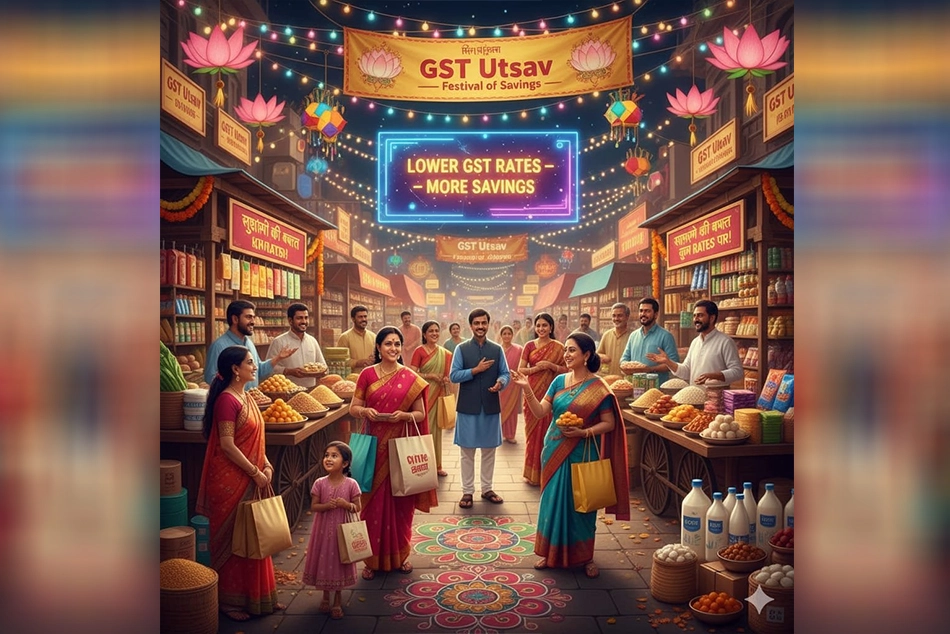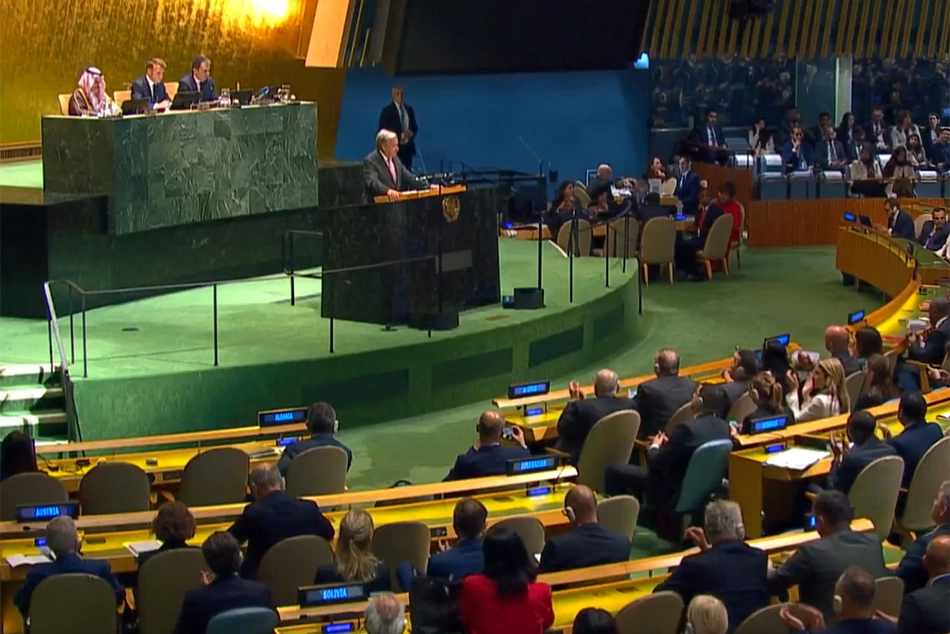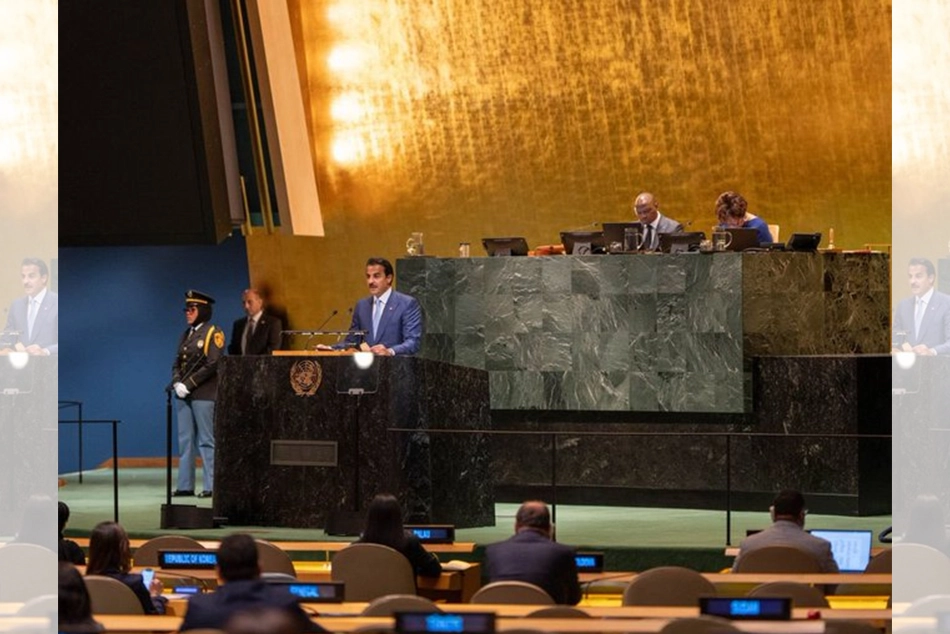
GST 2.0: Will Modi government’s gamble pay off?
If consumption rises during this festive season, the government’s gamble will pay off. If not, it will expose the deeper cracks in India’s financial system, demanding urgent reforms beyond tax cuts.

On 22nd September 2025, Prime Minister Narendra Modi announced the launch of GST 2.0, calling it the “next-generation GST.” The government has positioned this reform as a massive relief for households, industries, and consumers. From groceries to automobiles, essentials to luxury items, GST 2.0 promises significant savings claims the government.
PM Modi went on introducing the idea of a “GST Bachat Festival”, encouraging citizens to shop in the same spirit as big online sales such as “Big Billion Days.” The government believes this enthusiasm-driven push to buy and sell is necessary to revive a sluggish economy.
But while the reforms bring visible relief in several sectors, critics argue that it may be “too little, too late.” Let’s explore the positives, challenges, and deeper economic implications of GST 2.0.
The Good News: Everyday Savings for the Common Man
1. Relief on Groceries and Essentials
Households are among the biggest beneficiaries of GST 2.0. Groceries, bathroom essentials, and food items have been brought under the 5% GST slab, translating into savings of up to 12% on monthly bills. Experts estimate that an average middle-class household can save nearly ₹1,000 per month.
2. Lower Costs of Education and Medicines
Stationery & Books: GST rates reduced from 12–14% to just 5% or zero.
Medicines: Reduced by 5%, while rare-disease drugs, including cancer medicines, are now exempt.
Education materials: Significant relief for parents and students.
3. Insurance Premiums Without GST
Since July 2017, life and health insurance premiums carried an 18% GST, a move widely criticized as unethical. With GST 2.0, this has been abolished.
- A health insurance premium of ₹34,500 now costs ₹30,000
- A family floater policy of ₹59,000 drops to ₹50,000
- Senior citizen and critical illness covers also see sharp reductions
In FY 2024 alone, the government collected ₹16,398 crores from insurance GST. With GST 2.0, citizens finally get relief.
4. Big Discounts on Automobiles
- Two-wheelers (≤350cc): GST cut from 28% to 18%, making bikes and scooters more affordable. Example: Bajaj reduced ₹20,000 on KTM bikes; Honda Activa saw an ₹8,000 drop.
- Cars: Small cars are cheaper by ₹70,000, while big cars like Scorpio, Harrier, Venue, and Creta are cheaper by ₹1–1.5 lakhs.
5. Home Appliances and Electronics
From ACs and TVs to dishwashers, GST cuts mean cheaper prices. With festivals like Navratri and Diwali around the corner, this is good news for middle-class families.
6. Boost to Housing and Construction
- Cement: GST cut from 28% to 18%.
- Tiles, granite, wooden products, bamboo: Cheaper construction costs.
This may positively impact real estate and infrastructure.
Why the Government Pushed GST 2.0 Now
- To Revive a Slowing Economy: GST 2.0 is not just a festive gift. It is a stimulus package in disguise, designed to revive weak consumption and boost demand.
- To Offset Global Tariffs: With higher tariffs from global markets (e.g., U.S. tariff hikes), India needs stronger domestic consumption to balance the impact.
- To Support Labour-Intensive Industries: Textiles, leather, toys, and footwear—industries employing millions—are struggling. Lower GST aims to save jobs and support SMEs.
- To Revive the Auto Industry: The automobile sector, a key economic driver, faced stagnation. GST 2.0 is expected to unclog stockyards and stimulate demand.
On the other hand, the opposition calls it too late too little thing. The Congress and other opposition parties have criticized GST 2.0 as:
- Delayed by 8 years.
- A reform that denies states compensation extensions.
- A political move, with the government claiming credit for fixing mistakes made earlier.
The Stress Test: Can GST 2.0 Revive the Economy?
PM Modi calls GST 2.0 a “festival of savings”, but many economists see it as a stress test for the Indian economy.
1. The Government’s Expectation
- GST 2.0 could create a multiplier effect worth ₹2 lakh crores during the festive season.
- The government estimates a short-term revenue loss of ₹50,000 crores, while SEBI predicts a ₹5 lakh crore boost, potentially raising GDP growth by 1.5%.
- The long-term goal: GDP at 7% by 2027 and the $5 trillion economy target.
2. The Harsh Reality or the downside
However, the real challenge is whether people have enough disposable income to spend, even with reduced GST.
- Personal loans: Up 17% in a decade, now at ₹61 lakh crores.
- Credit card debt: At ₹3 lakh crores, with 25% of users revolving debt at 49% interest.
- Gold loans: Increased from ₹25,000 crores to ₹2.94 lakh crores in eight years, showing that households are pledging assets to survive.
- Blume Venture report: 100 crore Indians have no extra money to spend.
This means GST cuts may only benefit the 13–15% of Indians with strong purchasing power, while the majority will remain unaffected.
If there’s one non-debatable success of GST 2.0, it’s the removal of GST on insurance premiums and reductions in healthcare, medicines, and education expenses. These directly ease financial burdens on families and ensure wider access.
Conclusion: A Festival or a Reality Check?
GST 2.0 is being celebrated as a festival of savings and a bold economic move. From groceries to cars, medicines to cement, the reforms touch every household and industry.
Yet, beneath the festive discounts lies a tough reality: millions of Indians are buried under loans, struggling with stagnant salaries, and forced to sell gold for daily survival. For them, even a 0% GST makes little difference.
In essence, GST 2.0 is not just a Tax Reform — it is a stress test for India’s economy. If consumption rises during this festive season, the government’s gamble will pay off. If not, it will expose the deeper cracks in India’s financial system, demanding urgent reforms beyond tax cuts.
[The writer, Mohd Ziyauallah Khan, is a freelance content writer & editor based in Nagpur. He is also an activist and social entrepreneur, co-founder of the group TruthScape, a team of digital activists fighting disinformation on social media.]
Follow ummid.com WhatsApp Channel for all the latest updates.
Select Language to Translate in Urdu, Hindi, Marathi or Arabic







